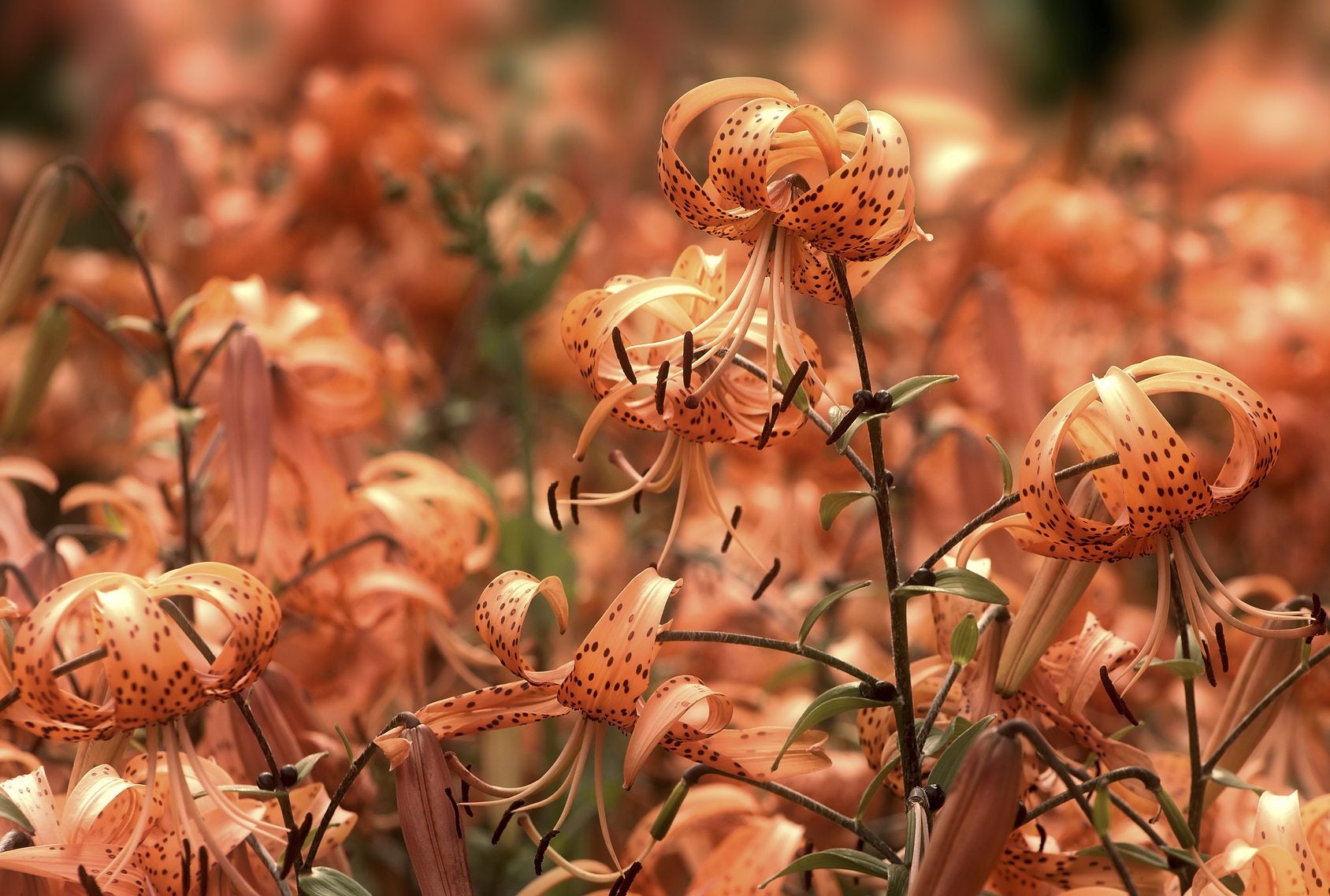Transplanting Tiger Lilies: How To Transplant Tiger Lily Plants


Like most bulbs, tiger lilies will naturalize over time, creating even more bulbs and plants. Dividing the cluster of bulbs and transplanting tiger lilies will enhance growth and blooming, and further increase your stock of these charming lilies. For best success, you should know when to divide and how to transplant tiger lily plants. The process is easy, and you can even give a few of these stunning flowering bulbs away every few years.
When Should I Transplant Tiger Lilies?
Tiger lilies are vigorous perennial bulbs that bloom in summer. They may be white, yellow, or red, but are usually deeply orange with speckled petals. Plants may grow up to 4 feet (1 m.) tall and over time the number of blooms will increase. Tiger lilies can be propagated through bulbs, scales, bulbils, or seed, but the quickest and easiest method is through division of established bulbs. Transplanting tiger lilies will result in a crop the next year if you time it just right. Transplanting summer-blooming bulbs like tiger lilies can be done at any time of the year, but you might sacrifice flowers if you don't get the timing right. The best time for transplanting tiger lily bulbs is when the foliage has died back. Just remember to mark the area before all the greenery disappears or you may miss the bulbs. The bulbs are quite hardy even in areas with sustained freezes and don't usually need to overwinter indoors. Autumn is generally the time the greenery is dying back and the best time to transplant the bulbs. If you are transplanting live plants, make sure to plant them at the same depth in which they were growing and provide them with adequate water to reestablish.
How to Transplant Tiger Lily Plants
It's not actually the plants you will transplant unless you opt to lose some flowers and move them during the growing season. If you wait until fall, all that is left to move are the bulbs. To remove the bulbs, use a shovel and cut straight down several inches (8 cm.) away from where the plants were. Dig as far out from the main clump of the plant, or plants, as needed to avoid cutting the bulbs. Then, carefully excavate inward until you find the bulbs. Lift the bulbs gently and brush off the soil. If the bulbs are in a big clump, delicately separate them. If any plant material remains on the bulbs, clip it off. After you have lifted and separated the bulbs, check for rotten spots and discoloration. Discard any bulbs which aren't healthy. Prepare the bed by loosening the soil to a depth of 8 inches (20 cm.) and adding in organic matter and bone meal. Plant the bulbs 6 to 10 inches (15-25 cm.) apart at a depth of 6 inches (15 cm.). Bulbs need to be situated with the pointed side up and the roots downward. Press soil around the bulbs and water to settle the soil. If you have snoopy squirrels or other digging animals, place a section of chicken wire over the area until plants sprout in spring. Transplanting tiger lily bulbs is easy and the results will be bigger flowers and more than ever before.
Sign up for the Gardening Know How newsletter today and receive a free copy of our e-book "How to Grow Delicious Tomatoes".

Bonnie Grant is a professional landscaper with a Certification in Urban Gardening. She has been gardening and writing for 15 years. A former professional chef, she has a passion for edible landscaping.